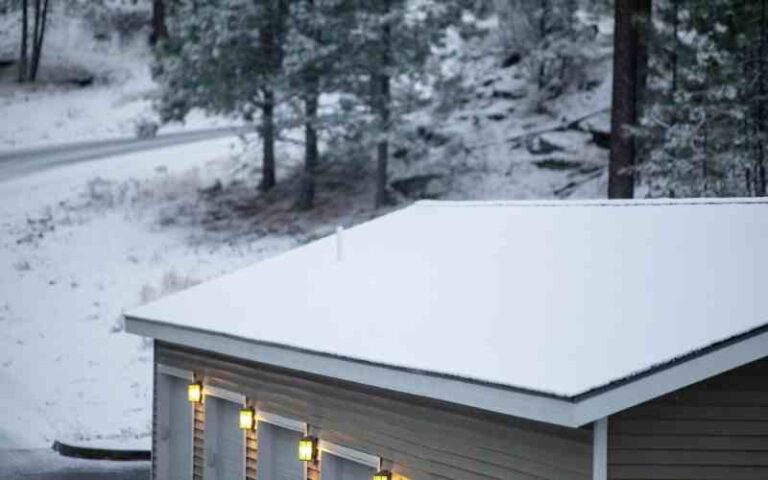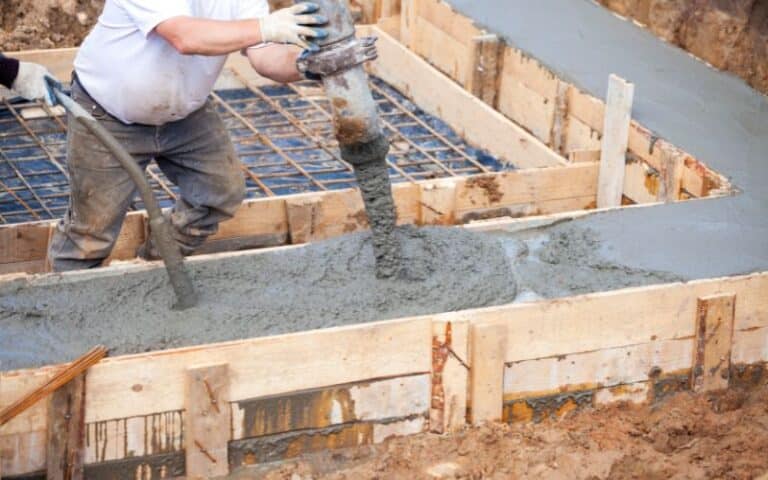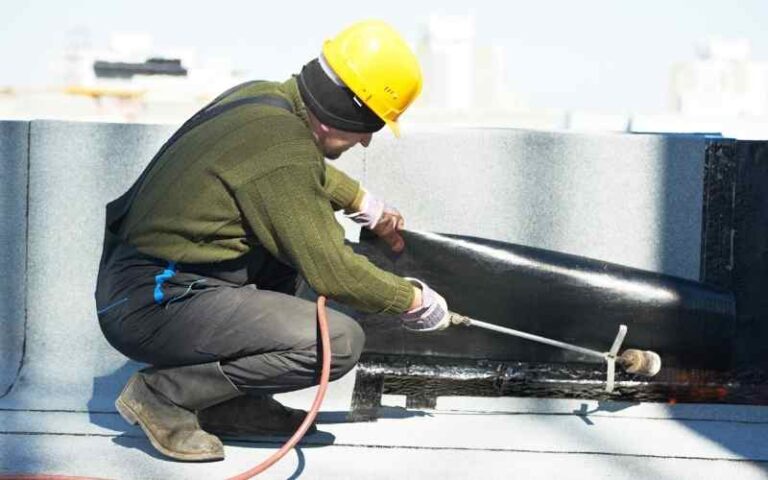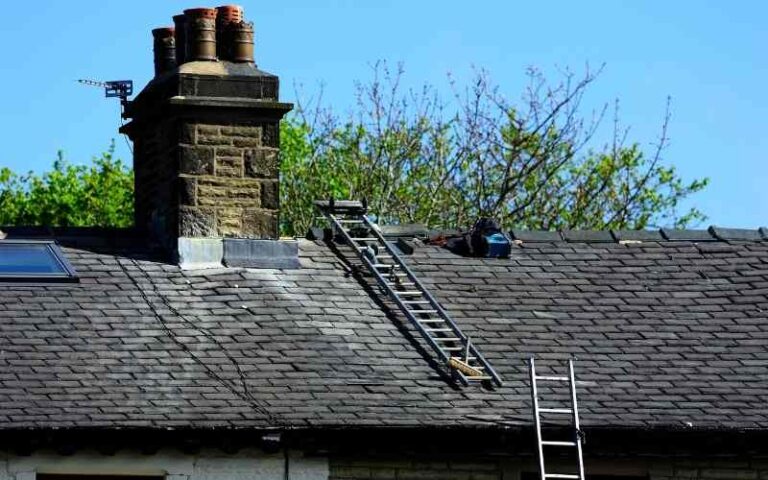Have you ever wondered about the installation process of the hardwood floor or maybe the preventive measures taken against moisture and rot?
Well, it begins with a single piece of material, which is a multi-purpose underlay building paper. It serves as a friction and moisture barrier, among others.
Rosin paper, also called red building or sheathing paper, is a heavy-duty type of felt paper used in construction work. It primarily serves as an underlay for flooring and wall siding. It is vital as it serves as an obstruction to wind, and air and also a friction barrier.
Ready for a Roofing Quiz?
Can You Use Felt Paper Under Hardwood Floors?

The beautiful and durable hardwood flooring is appropriate for dry areas of your home. However, there is the moisture content in the air, and as such, even in those seemingly dry areas.
And, since hardwood is obviously wood, moisture spells danger.
As such, underlayment is needed using a moisture-resistant material while installing hardwood flooring.
Of all the building sheathing materials that I know, felt or rosin paper is the best for the job.
It restrains moisture from coming in contact with the wooden floors, thereby preventing the growth of rot, mold, and fungi.
The benefits of using felt paper under hardwood flooring range from its protective utility, compatibility, and time-saving to being economical.
Also, it reduces the flow of air and acts as a slip sheet which enables various materials to align. Additionally, it serves as a sound pad as it reduces squeaks and noises.
Do I Need Paper Under Hardwood Floor?
Yes, of course, you need paper under solid hardwood flooring. But, unless you do not want your hardwood floor to last, go ahead and install it without underlay.
Don’t get confused by the word “paper,” as the term doesn’t refer to ordinary paper. For example, ordinary paper cannot be placed under the hardwood floor; what you need is flooring rosin paper.
In case you converse with others about hardwood flooring, and you hear the term felt paper, do not get confused. It is simply the same as rosin paper.
Having read from the start to this point, I believe that you understand the benefits of using rosin paper as an underlay for hardwood floors.
However, you wouldn’t want to invest in hardwood floors only to have them spoil or deteriorate in no time.
Since plastic and tile floors have a plastic film as an underlay, you may also wonder if it applies to hardwood floors.
No, it is not, so don’t even attempt it. Plastic has a higher rate of moisture retainment, so it is not acceptable.
The only instance where it is safe to just install hardwood flooring without a protective covering is when it comes padded.
Some manufacturers of hardwood flooring planks add factory padding to it so that you can install it easily.
This gesture saves you from the stress of buying and installing or paying for the installment of felt paper.
Installing Felt Paper Under Hardwood Flooring
Installation of felt paper beneath the hardwood floor is of great importance, so you shouldn’t overlook it.
The presence of felt paper supports the durability of the hardwood floor by absorbing moisture. We all know that moisture and wood never sit well together.
If your hardwood floor absorbs excess moisture, it risks rot and damage. This situation exposes you and your family to risks and depreciates your home’s value.
Therefore, installing rosin/ felt paper underneath your hardwood flooring is crucial. However, you may not know how to do this, so here are the steps.
- Get the room’s total square footage (s) by measuring the width and length and multiplying both figures. This calculation will help you determine how much rosin paper you need.
- Ensure that the floor sheathing is in good condition. If you find nails sticking up, hammer them down and then sweep to clean off debris, dust, and dirt.
- Remove the base molding and unscrew the door’s threshold using a knife and a drilling machine.
- From the lower-left corner of your room, begin to roll and spread out the rosin paper.
- Ensure to staple firmly after every 12 inches. Also, secure the perimeters of the rosin paper with staples in the middle to help fasten it properly to the sheathing below.
- Go to the edge and trim the rosin paper perfectly with a pen knife. Then, from the bottom left corner of the room, unroll another sheet of rosin paper and spread it so you’ll have a dual underlay.
- Let the second layer overlap the first by a few inches, then staple around similarly.
- Lastly, check to ensure that all staples are correctly inserted and that every room angle is cornered.
- Note that you should overlap the seams when using 15lbs felt paper. For 39lbs felt paper, but the seams.
So easy, isn’t it? So congratulations, you’ve successfully installed your felt paper on your own!
When Installing Hardwood Floors Should I Use Felt Paper?
Hardwood flooring is beautiful, easy on the eyes, and increases the value of a house. But, before installing it, you need to arrange a perfect surface for the hardwood to rest on.
While a plastic film is normally used as sheathing for cement or tile flooring, it’s unsuitable for hardwood. Why? Because a plastic film beneath hardwood will increase the rate of mold and fungi growth.
Since the effect of plastic sheeting beneath the hardwood floor is exactly what you aim to avoid, you should use rosin or felt paper. This heavy-duty multi-purpose building paper is the perfect fit for the job.
Rosin paper is water-resistant and provides moisture protection. It not only absorbs moisture and wetness but serves as a barrier against friction, thereby dampening sounds between the floorboard and subfloor.
However, rosin paper is for unpadded hardwood planks. You can place hardwood planks with paddings on your previous flooring or plastic sheet.
Glue or Red Rosin Paper for Additional Subfloor Layer
When installing the second layer of a subfloor, you are not to use glue. Rather, you should use red rosin paper. Glue or adhesive is used when installing the first layer of the subfloor.
Let’s see the steps to install your subfloor’s second layer with red rosin paper.
- Before you begin, inspect the first layer for instability, squeak, and then tighten the fastening.
- Ensure that the first layer is already dry, as you will install the additional layer at right angles to the joist.
- Spread the red rosin paper over the subflooring and then install the extra layer
- Leave a ¼” space between the subfloor and wall perimeter. Ensure that both layers overlap by 4inches and use a hoist space to stagger end joints.
- Use the appropriate screw to fasten it, thus completing the process.
Conclusion
Unless you acquire padded hardwood planks, you should also purchase rosin paper.
Red rosin paper is extremely important in flooring because it protects your floor against the elements, thereby lengthening its lifespan.
Luckily, the installation process of rosin paper is easy enough for you to save cash and do it yourself if you’d prefer.






